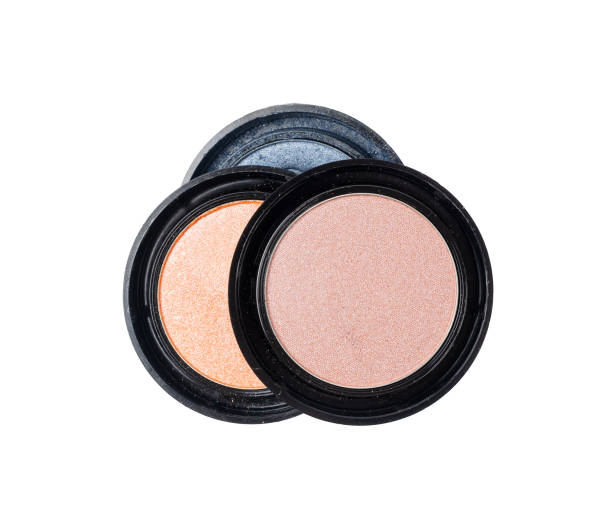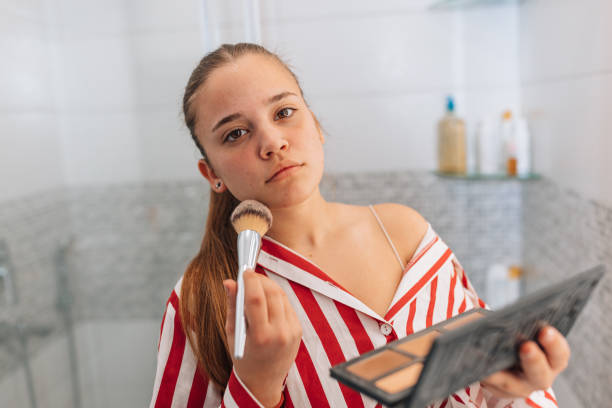Choosing the best blush and highlighter shade can significantly enhance your complexion and give life to your makeup look. The key to selecting the best shades for your skin tone involves understanding your skin’s undertones, considering the occasion, and experimenting with different textures. Whether you’re striving for a natural glow or a dramatic evening look, the perfect blush and highlighter shades can accentuate your features and bring warmth and dimension to your face.
Your Skin’s Undertone: The Foundation of Your Choice
Understanding your skin’s undertone is the first step in selecting a flattering blush and highlighter. Typically, undertones are categorized as cool, warm, or neutral. Here’s how to determine yours and what to choose based on that:
- Cool Undertones: If your skin has hints of blue or pink, look for blush with similarly cool undertones like soft pinks or lilac, and highlighters that lean towards silver or pale pink.
- Warm Undertones: For skin with a yellow or golden glow, go for peach or coral blush and gold or bronze highlighters to complement the warmth in your skin.
- Neutral Undertones: If you have a mix of both cool and warm hues, or your veins appear both blue and green, you have the flexibility to choose from either side of the spectrum. Neutral toned blushes and highlighters tend to work well.
Following these guidelines allows your makeup to enhance your natural beauty seamlessly.
The Right Shade for the Right Occasion
Your choice of blush and highlighter shade should also be influenced by the context in which you’re going to wear it. For daytime or professional settings, subtle shades that mimic a natural flush will create an understated, polished look. During the evening, bolder and more shimmery shades can add drama and attract light to your face for a glamorous effect. Adapt your makeup to the lighting and the mood of the event you’re attending to keep your look appropriate and striking.
Complementing Your Eye and Hair Color
While skin undertone is crucial, don’t forget to factor in your eye and hair color when choosing your blush and highlighter.
- For blue eyes: Peach or soft coral can enhance the blueness of your eyes.
- For green eyes: Rosy and mauve tones can make green eyes pop.
- For brown eyes: Almost any shade complements brown eyes, but warmer tones like bronze can be particularly flattering.
- For blonde hair: Opt for soft pink or peach for a harmonious look.
- For brunette hair: Richer tones like deep mauve or berry can beautifully contrast with darker hair.
- For red hair: Terracotta or bronze blush can look stunning and natural.
Remember that these are guidelines, not rules. Experimentation will lead you to the shades that you personally prefer.

Textures Matter: The Finish You Prefer
The texture of your blush and highlighter is another factor to consider. Powder formulations are great for oily skin or for creating a matte finish. They’re also user-friendly for makeup beginners. Cream and liquid blushes and highlighters meld into the skin for a dewy effect and work well for dry or mature skin, providing a youthful glow. Baked and gel formulas offer versatility and are typically buildable, from sheer to high-impact.
Test and Swatch: Finding Your Perfect Match
Unfortunately, no guide can substitute for personal testing. The most foolproof way to select your blush and highlighter shades is to visit a store and swatch different shades on your skin. Observe the colors in various lighting conditions to see how they change. When testing blush, apply it to the apples of your cheeks to see how it complements your complexion. For highlighter, swatch along the high points of your face where the light would naturally hit. Trust your instincts—if a shade looks off on you, it probably is.
Conclusion
Finding the perfect blush and highlighter shades may seem daunting, but it can be a fun and rewarding process. Remember to consider your skin’s undertones, the lighting of the event you’re attending, complementarity with your eye and hair color, the texture that suits your skin type best, and most importantly, personal preference and comfort. With these factors in mind, you’re well on your way to picking shades that will not only flatter your natural beauty but also give you that sought-after radiant glow.
FAQs
1. Can I wear blush and highlighter if I have acne-prone skin? Yes, you can wear blush and highlighter if you have acne-prone skin. Look for non-comedogenic formulas to avoid clogging pores and opt for a matte finish to reduce the appearance of texture.
2. How do I apply cream highlighter without disturbing my foundation? To apply cream highlighter without disturbing your foundation, use a damp sponge or a stippling brush for a gentle application, and dab the product onto your skin rather than dragging it.
3. Is it better to use my fingers or a brush to apply blush? Both methods can be effective—it often depends on the formula. Powders usually apply best with a brush, while creams and liquids can be applied effectively with fingers for a more natural look, as the warmth of your hands helps blend the product.
4. How do I choose a blush for mature skin? For mature skin, opt for cream or liquid blushes that provide a dewy finish and don’t settle into fine lines. Peach or rose tones can add a youthful flush to the cheeks.
5. Can I mix blush and highlighter shades to create a custom color? Yes, mixing blush and highlighter shades can create a unique color or effect. Just ensure that the textures are compatible (like mixing two powders or two creams) for the best results.



